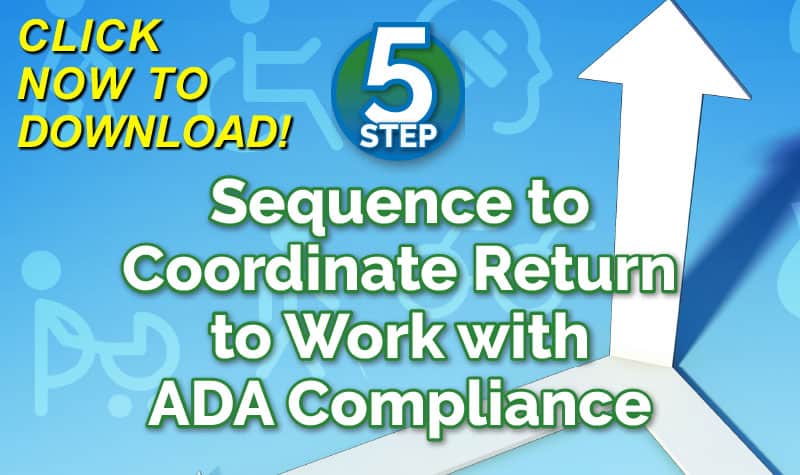According to data on labor-force participation from the U.S. Current Population Survey available from the Bureau of Labor Statistics between 2005 and 2010, the number of employees in the U.S. aged 55 to 64 increased 52%. So if an employer has a majority of its workforce in this age range, it is reasonable to say there is an associated risk. But there are positives as well. Below we discuss these issues — positive and negative.
1. An older workforce at your plant can lead to fewer claims
Many smaller employers and plants can have a great loss run report. Workplaces with a loyal workforce and little turnover in a smaller facility can run well. A smaller plant may have only two to three dozen employees. A majority of these workers likely have been employees for over 15-20 years and remain loyal. They have survived buyouts, layoffs, decreased demand, and economic woes. They took the layoffs and returned back to work when needed. They did whatever tasks were asked of them. They know how to do multiple jobs, run multiple machines, and handle different orders as needed. (WCxKit)
These senior-level workers are reliable. They do the safety checks. They can run and maintain their machines in their sleep. They rarely get injured because of years of practicing safety standards. They know not to cut corners. When one of these workers is injured, they want to get back to work. But often this generation of worker has complicated injuries.
2. But when older workers are injured it leads to longer, more severe claims
This senior-level workforce often makes high wages. When they get injured, the wage loss component can account for a big cost associated with lost-time comp claims. Being off work for a month can cost two to three times more than the associated medical costs. By keeping a light duty work program in place, employers can save some expenses.
This senior-level workforce often makes high wages. When they get injured, the wage loss component can account for a big cost associated with lost-time comp claims. Being off work for a month can cost two to three times more than the associated medical costs. By keeping a light duty work program in place, employers can save some expenses.
Shoulder, knee, and back injuries can be particularly severe and often require surgery. These body parts withstand decades of work-related wear and tear. The adjuster has to determine if the injury is work related or due to non-occupational factors. Levels of arthritis, degenerative disc disease, and degenerative ligament tearing are factors. What the employee was doing during the injury is also key. Is this a repetitive motion injury or an acute injury? Or is this an injury related to age that happens to occur in the workplace? The golden rule of workers comp is “Just because an injury happens at work does not mean it is actually caused by work duties.”
If an employee’s back gives out at work, this does not necessarily equate to full granted workers compensation benefits. The adjuster must do a complete, thorough, and often long investigation to maintain ethical accuracy. As long as the adjuster is given all the information needed and questions answered, the correct judgment will be made.
Older employees may feel an injury is work related. After all they have never had a claim or a surgery until now. Now they are off work and frustrated with the recovery process. They are afraid of surgery. And if the claim is denied, legal costs can mount. This high level of employee will fight, and will not take a workers compensation denial lightly. Especially if the employee feels entitled to benefits after all the years on the job. These employees will often obtain legal counsel to explore options, so the adjuster must cover all bases.
3. Identify issues and reduce risk
While older workers generally have fewer workplace injuries, they are often more costly to treat. In addition, they tend to be away from work almost twice as long as their younger coworkers. By understanding the aging process and its impact on workers comp claims, adjusters and employers can help better protect employees from injury. Risks and trends should be identified on the work floor. As previously mentioned, tailoring workstations to your workers to encourage safety and production is crucial. Talking to workers to help the employer identify issues before they become a potential hazard is a positive way to use worker feedback.
4. New technology can spike claims so focus on retraining and safety
New technology can cause frustration and disruption to a daily work routine the worker has done for years. The employee may not be open to this at first. So training and safety are even more crucial. Without it, injuries can and will occur. Follow up with consistent training to reduce the risk and threat of injury.(WCxKit)
Summary
The most experienced workers can be an employer’s greatest asset. But if they become injured, they can become the greatest insurance cost. By keeping them involved, keeping them trained, and keeping them focused on safety, employers can avoid and prevent injury while and keep older workers on the work floor working.
Author Rebecca Shafer, JD, President of Amaxx Risk Solutions, Inc. is a national expert in the field of workers compensation. She is a writer, speaker, and website publisher. Her expertise is working with employers to reduce workers compensation costs, and her clients include airlines, healthcare, printing, publishing, pharmaceuticals, retail, hospitality, and manufacturing. See www.LowerWC.com for more information. Contact: RShafer@ReduceYourWorkersComp.com.
WORK COMP CALCULATOR: www.LowerWC.com/calculator.php
MODIFIED DUTY CALCULATOR: www.LowerWC.com/transitional-duty-cost-calculator.php
SUBSCRIBE: Workers Comp Resource Center Newsletter
Do not use this information without independent verification. All state laws vary. You should consult with your insurance broker or agent about workers comp issues.
©2011 Amaxx Risk Solutions, Inc. All rights reserved under International Copyright Law. If you would like permission to reprint this material, contact Info@ReduceYourWorkersComp.com.

















